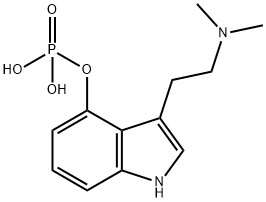Description
The intentional ingestion of hallucinogenic mushrooms by
Mesoamerican natives dates back centuries. Early European
explorers documented the Mayan and Aztec symbolism
depicting the use of mushroom during spiritual ceremonies.
Albert Hofmann first synthesized lysergic acid diethylamide
(LSD) from psilocybin extracted from mushrooms. During the
1960s and 1970s, researchers conducted experiments on the
utility of psilocybin for psychotherapy before drug laws curbed
its use. Psilocybin is described as an entheogen, a substance
used to raise spiritual consciousness. Today most countries
have outlawed psilocybin possession; however, widespread
illicit use continues.
Chemical Properties
Crystallin Solid
Uses
The most common use of this mushroom is to induce recreational
hallucinations. Some Native American groups continue
to employ psilocybin-containing mushroom species in official
ceremonies. The adjunctive use of psilocybin for mainstream
psychotherapy has been discontinued. Hallucinogenic mushrooms
are generally considered a low-harm drug of abuse.
Uses
The major of two hallucinogenic components of Teonanacatl, the sacred mushroom of Mexico, the other component being psilocin. Psychomimetic.
Controlled substance (hallucinogen).
Definition
An indole derivative. An alkaloid from certain
mushrooms; hallucinogenic drug.
Safety Profile
Poison by intravenous
route. Moderately toxic by intraperitoneal
route. Human systemic effects by ingestion
and intraperitoneal routes: euphoria,
hallucinations, toxic psychosis, muscle
weakness, nausea or vomiting, visual field
changes. Mutation data reported. When
heated to decomposition it emits very toxic
fumes of NOx and POx.



